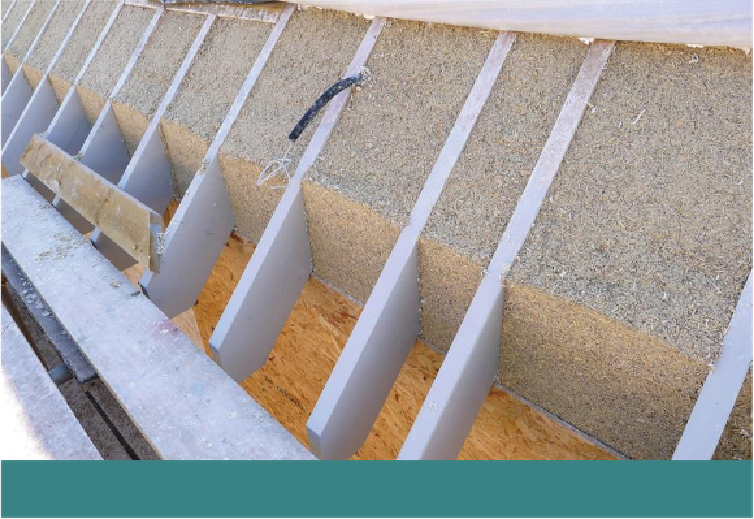Civil Engineering Reference
In-Depth Information
Hempcrete at the eaves of a building: the waterproof roof membrane is in place but can be rolled
back to allow the hempcrete to be placed.
It is possible for hempcrete to be very roughly stuffed up into the space under the eaves
from below, but this takes a lot of time and effort compared with building the rest of the
wall, and is unpleasant and somewhat risky work, as particles of shiv coated in wet lime
binder fall back down on the person who is stuffing handfuls up into the gap. It also leads
to a far less predictable and consistent density at the very top, compared with the rest of the
wall. Despite this, there are some instances, usually in the restoration or retrofit of older
buildings, where the technique is employed as a last resort.
A better solution is to construct the roof up to the point of the breathable membrane or roof
underlay, leaving the roof watertight but unfinished, and fit the membrane in such a way
that at the eaves it can be folded or rolled back in order to place the eaves hempcrete from
above the rafters. Of course some roof coverings may not include such a membrane, but
every effort should be made to detail the roof at the eaves in such a way that the roof can
be constructed prior to the hempcrete being placed, in order to protect it, with a removable
or partly finished section that allows the hempcrete to be placed from above.

Search WWH ::

Custom Search